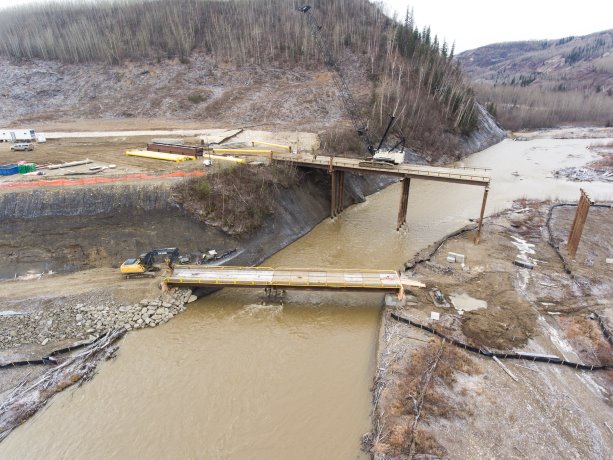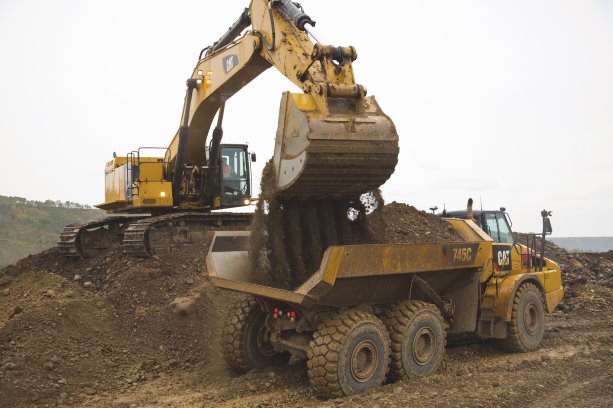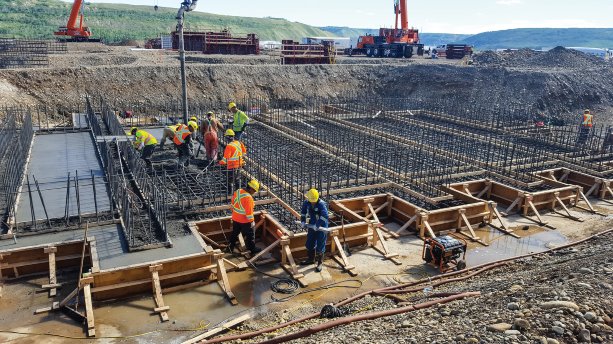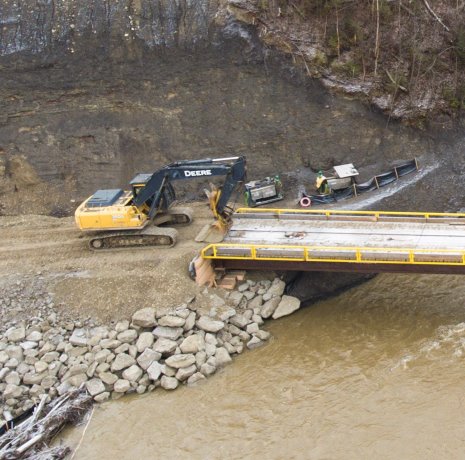With Site C being B.C.’s largest project ever, the impact on the dam’s site in the Peace River region has been an area of concern.
At this year’s Association of Consulting Engineering Companies – B.C. Transportation Conference, Site C officials presented how they studied the impact of traffic on the region and made improvements to local infrastructure.
BC Hydro social resource specialist Nancy Pepper explained that early on the team noted the project had the potential to have significant impacts on neighbouring communities.
The project includes access roads in the vicinity of the site and a temporary construction access bridge across the Peace River at the dam site.
Crews will also build two temporary cofferdams across the main river channel, worker accommodations, shoreline protection, two new 500 kilovolt AC transmission lines, an 800-metre roller-compacted-concrete buttress and a generating station.
The main part of the project entails constructing an earthfill dam, approximately 1,050 metres long and 60 metres high above the riverbed and an 83-kilometre-long reservoir.
How much all that heavy construction activity would impact the local roads and population was a concern, so Pepper and the team began with a population assessment model of how many people might come to the region for employment, including dependents. This would impact the demand on local services, including transportation.
The team’s model showed that 90 per cent of the population increase would relocate to the North Peace area and would peak at year five in the construction schedule.
Don Wharf, who’s in charge of highways and roads for the project, explained that another task was establishing background traffic data for the region’s transportation network. Count station data showed estimated growth rates of 1.4 to 1.5 per cent.
"While they seem like low numbers in the transportation industry, they do have an impact on an area that is not used to it," said Wharf.
The team then had to estimate project traffic, including material deliveries, heavy equipment, employee transportation and more. Wharf said that when all the data was crunched, it showed negligible impact.
An initial assessment was completed when unemployment in the region was effectively at zero so the project was expected to require many new residents.
"The rate is currently the highest in B.C. and the construction hiring rate from Peace River residents has been between 45 per cent and 49 per cent," said Wharf. According to government statistics, it is estimated that the population of Fort St. John decreased between 2014 and 2015.
"The city is actually growing slower than was planned," said Wharf.
Despite this, BC Hydro has committed to making various improvements to address community concerns after consulting with residents in nearby communities.
To address fog conditions within the community of Taylor, BC Hydro, in conjunction with the Ministry of Transportation and Infrastructure, undertook the installation of additional street lighting to increase visibility during evening hours and in foggy conditions.
Dynamic message board signs were also installed at the summit of the South Taylor Hill for northbound traffic and the North Taylor Hill for southbound traffic to advise motorists of local fog and road conditions.
Messaging on the boards could also include notifications about surface driving conditions, road closures, construction advisories, visibility as well as being part of the provincial Amber Alert program.
A web camera is also being installed in the vicinity of the Taylor Bridge as part of the South Taylor Hill improvement project and will be incorporated into the ministry’s Drive BC program, providing information to the public.
BC Hydro also widened several narrow roads that will experience heavier vehicle traffic and realigned one section of road to eliminate a sharp curve. Some gravel roads were paved to reduce noise and dust.
As improvements are made and the project progresses, the team intends to continue to monitor the transportation network at five key intersections for traffic performance and collision analysis, Pepper explained.
After one year, no intersections have exceeded the set traffic threshold, however, three had collision rates greater than the five-year average. Wharf explained this is still nothing outside the norm.
The Site C project is more than one year into construction. The $8.8-billion dam intends to meet future electricity needs by providing 1,100 megawatts of capacity and producing about 5,100 gigawatt hours of energy each year — enough to power the equivalent of 450,000 homes per year. It is scheduled to be complete in 2024.

1/3
Construction work continues on the Moberly River Construction Bridge in B.C’s Peace River Regional District for the Site C dam project.
Photo: BC Hydro
2/3
Site C dam construction crews work to move earth on the project’s south bank. Before work on the project got underway more than a year ago












Recent Comments
comments for this post are closed